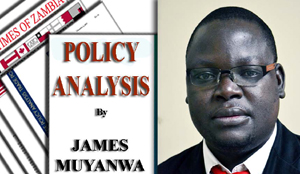 FOLLOWING a slowdown during the global financial crunch, illicit outflows have been rising, inking US$1 trillion since 2011 and hitting the new highest point of US$1.1 trillion in 2013.
FOLLOWING a slowdown during the global financial crunch, illicit outflows have been rising, inking US$1 trillion since 2011 and hitting the new highest point of US$1.1 trillion in 2013.
This is according to the Global Financial Integrity (GFI) illicit financial flows (IFFs) report for 2004 – 2013, which was unveiled last week.
Cumulatively, the study finds that during the 10-year period, the developing world collectively lost $7.8 trillion through IFFs.
According to the report, the GFI measures IFFs using two sources: firstly the deliberate trade misinvoicing (gross excluding reversals) and secondly, the leakages in the balance of payments.
Trade misinvoicing is the primary measurable means for shifting funds out of developing countries illicitly and during the period under review an average of 83.4 per cent of illicit ?nancial out?ows were due to this.
Of the total IFFs recorded in 2013 for example, $878 billion was through misinvoicing while the rest, $212 billion was through the Hot Money Narrow Out?ows (HMNOs).
Regionally, Asia has continued to lead in terms of the highest major volume of IFFs, comprising some 38.8 per cent of the developing world total over the 10 years under review.
Asia is followed by what is dubbed as developing Europe at 25.5 per cent and the Western Hemisphere at 20 per cent while the Sub-Saharan Africa (SSA) accounts for 8.6 per cent.
For poorer regions, like SSA, the figures could look small but their significance is vivid when one compares them to the Gross Domestic Product (GDP).
For instance when listed, the SSA tops, if these outflows are scaled as a percentage of GDP, with illicit ?nancial out?ows averaging 6.1 per cent of the region’s GDP.
I can liken the situation to the biblical poor woman who attracted Jesus’ attention for giving to God the only coin she had as offering while others who gave handsomely out of their plenty could not even earn a verse in the Bible.
The significance is also embodied in the opportunity costs of these IFFs – what could have the governments for the affected countries, like Zambia, gotten from these billions of dollars if they had not lost them?
For instance, for Zambia what public expenditure could have been made for a year from the nearly $4 billion (or about K40 billion) IFF which was lost in 2013, if the Government had received it?
A lot of course!
Just to give you a picture, following the recent fall of the value of the Kwacha, next year’s K53 billion budget is merely $5.3 billion, taking K10 for a dollar.
Therefore, the value of the $4 billion which was lost in 2013 as IFF was much higher than the K32.2 billion, which was the total budget for 2013.
One can, similarly, imagine on what the government could have spent the total K290 billion which was externalised in the 10-year period ended 2013!
It could have gone a long way!
Perhaps the government could have come up with annual budgets exclusively from the funds which were lost through IFFs.
The report also compares IFFs to Official Development Assistance (ODA) from developed countries as well as the Foreign Direct Investment (FDI) inflows.
Sadly, the IFFs exceeded those measures—combined—for seven of the 10 years of the study.
What that entails is that the affected countries, including Zambia, may not need the ODA and the FDIs for them to develop if there were no tax avoidance by some investors.
The GFI indicates that despite these substantial recorded in?ows, the continued growth of unrecorded, illicit out?ows has a destructive impact on development aspirations in many developing countries.
For instance, the report shows that for every dollar of ODA that was received by the developing world in 2012, $10 ?owed out illicitly.
This is sad and needs to be curbed.
To help abate the situation, GFI proffers some recommendation for the host governments to look at.
It recommends a number of steps that governments and other international regulators can take to develop greater ?nancial transparency and curtail illicit out?ows.
These include the need to ascertain the bene?cial owners of the companies, to enforce anti-money laundering and adopt the country-by-country reporting.
Other measures are the enhancing of tax information exchange among countries and curbing trade misinvoicing by treating trade transactions involving tax havens with the highest level of scrutiny.
Further, the indicator for Sustainable Development Goal number 16.4 should be country-level estimates of illicit out?ows related to misinvoiced trade.
Additionally, governments should sign on to the Addis Tax Initiative to further support efforts to curb IFFs as a key component of the development agenda.
God willing, I will one day be able to go through these recommendations to evaluate them.
For comments call: 0955 431442, 0977 246099, 0964 742506 or e-mail: jmuyanwa@gmail.com.






